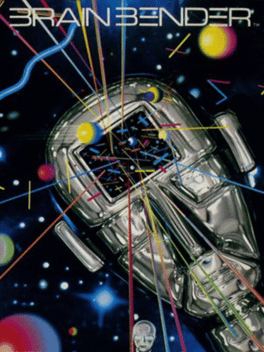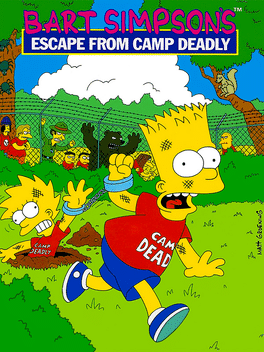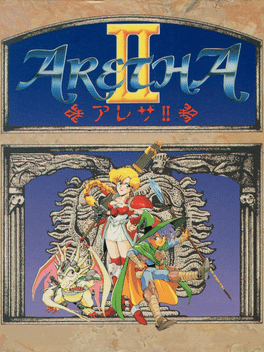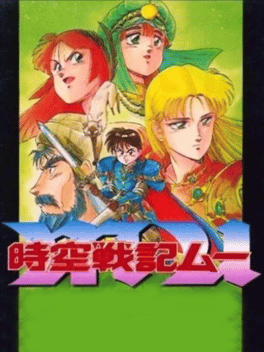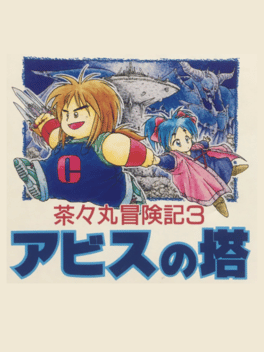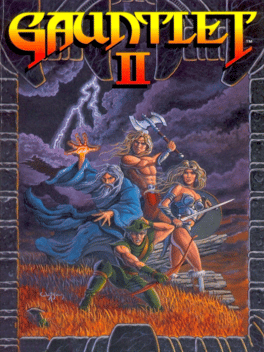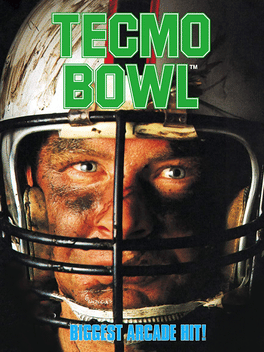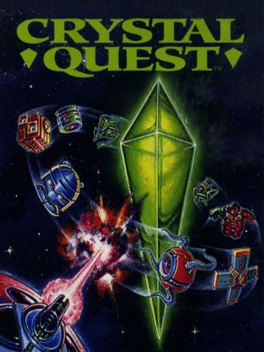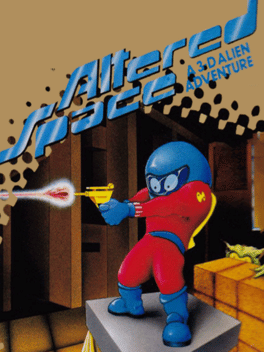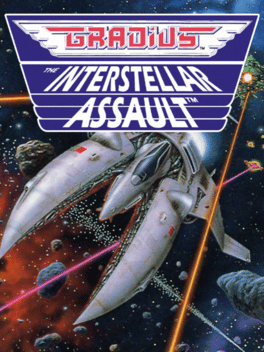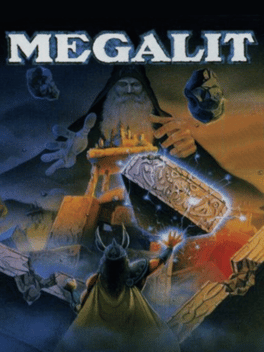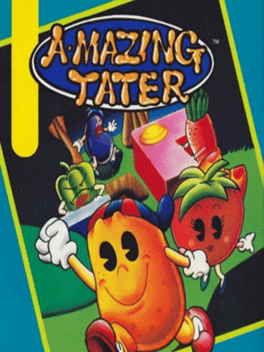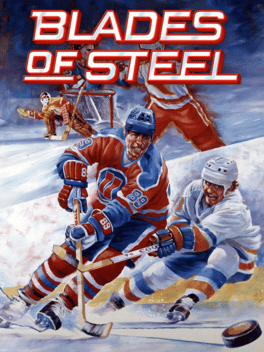New Game Boy Games - Page 42
-
Brain Bender
1991
Brain Bender
1991
star 4.7In Brain Bender, mirrors are manipulated in order to get them to reflect a laser beam into some balls of gas and destroy the satellite. Brain Bender features 120 different puzzles to solve. -
Wizardry Gaiden I: Suffering of the Queen
1991
Wizardry Gaiden I: Suffering of the Queen published in 1991 by ASCII, was the first of the trilogy of Wizardry roleplaying games released for the original gray-scale Nintendo Gameboy portable video game system. -
Bart Simpson's Escape from Camp Deadly
1991
star 5.9School's out and Bart's ready for some summer fun in the sun! Until he got the news - Homer and Marge were sending him and Lisa off to summer camp. Not just any camp, but the infamous Camp Deadly! How bad could it be? Well, with Ironfist Burns as head counselor and Nelson and his band of bullies as bunkmates, it's not exactly paradise. Bart and Lisa are determined to get out - but first they've got to survive outrageous food fights, killer bees and a life-threatening game of capture the flag. Help Bart and Lisa escape, at least in time for school! -
Xerd no Densetsu
1991
Xerd no Densetsu
1991
The "Xerd" of the game's title is a hero who defeated evil 800 years in the past. You control another character (default name Jake), prince of the one of the kingdoms, to defeat his evil twin brother by hunting down the reincarnation of the legendary hero. -
Aretha II
1991
Aretha II
1991
Aretha II is a Role-Playing game, developed by Japan Art Media and published by Yanoman, which was released in Japan in 1991. -
Jikuu Senki Mu
1991
Jikuu Senki Mu
1991
There used to be a continent called "Mu Continent", which was ruled by the king of the country called Prina. King Lars II suddenly turned the state religion of Neil into the evil religion of Max. Shortly after the Neil people were ousted from the sanctuary, the Queen of Purina suddenly disappeared. In addition, the newborn son of the king was taken away by someone. After the conversion, monsters began to appear in various parts of the continent. People began rumors that the people of Neil were manipulating monsters. It's been 16 years since then. The demons, who continued to grow in power, finally invaded Purina Castle. The seriously injured king runs to the remote village "Eribe". -
Chachamaru Boukenki 3: Abyss no Tou
1991
Chachamaru Boukenki 3: Abyss no Tou is a Role-Playing game, published by Human Entertainment, which was released exclusively in Japan in 1991. Interestingly, the main character was modeled after a developer at Human that later would appear as referee in a Fire Pro Wrestling for Super Famicom. -
Gauntlet II
1991
-
Tecmo Bowl
1991
-
Crystal Quest
1991
Crystal Quest
1991
Game Boy Port of Crystal Quest. Buckle in and gear up for the classic galactic ride of your life. Far beyond known galaxies, the stars are scattered with precious crystals. As a renegade outer space prospector, your job is to scoop 'em up and bring 'em home. Just one problem: The brilliant glow of these gems attracts some of the universe's foulest pests. We call them nasties - and they're just that. So go ahead...zap the intergalactic vermin and cash in on the crystals. It's nasty-blastin' fun. -
Navy Seals
1991
-
Altered Space
1991
Altered Space
1991
star 4.7The player is an astronaut trapped on an alien spaceship who has to try to find his way out while avoiding aliens and continually replenishing his oxygen supply. This was the first isometric view game on the Game Boy -
Blaster Master Jr.
1991
Blaster Master Jr.
1991
star 7.1Blaster Master Jr., known as Blaster Master Boy in North America and Bomber King: Scenario 2 (ボンバーキング シナリオ2?) in Japan, is an action video game developed by Aicom and published by Sunsoft. The game was released in 1991 for Game Boy. The game is a sequel to Robowarrior, a spin-off title in the Bomberman series by Hudson Soft. However, the game was marketed in western territories as a game in the Blaster Master series by Sunsoft. -
Higashio Osamu Kanshuu: Pro Yakyuu Stadium '91
1991
Higashio Osamu Kanshuu Pro Yakyuu Stadium '91 is a Sports game, published by Tokuma Shoten, which was released on the Game Boy in Japan in 1991. -
Battle City
1991
-
Gradius: The Interstellar Assault
1991
star 7Gradius: The Interstellar Assault retains the traditional horizontal scrolling gameplay from the Gradius series. Once again the player takes control of the Vic Viper and flies through five different stages destroying Bacterion's army. The game retains the traditional power-up bar from the original Gradius. The player can speed-up multiple times, use missiles, shoot double firepower or lasers, use several options at a time and use the classic shield (although it is referred to as a forcefield). However, before each game is started or continued, the player is given a "Weapon Select" screen. Here the player can choose between one of three settings for the missiles, double firepower, and lasers. -
Megalit
1991
Megalit
1991
When a wicked witch decides to rule the world with the power of her magic jewels, her terrifying plot leads her to kidnap elves, princesses, and even fairies. You're the brave warrior who's decided to save all the captured innocents, but the witch gets wind of your plan and turns you to stone. Now, your efforts turn to breaking the spell, which is going to require cracking the ancient puzzle of Megalit. If the princesses and magical beings stand any chance of making it out of the witch's clutches, you'd better solve the code quickly. -
Super Momotaro Dentetsu
1991
Super Momotaro Dentetsu is a video game in the Momotaro Dentetsu series of board game-style video games, genre released in 1989 by Hudson Soft for the Game Boy. The game was only released in Japan. It is the port of the first game in the series for the Game Boy. -
Amazing Tater
1991
Amazing Tater
1991
star 4.3This puzzle-game is the successor to Kwirk. The player has to guide a small potato to the exit of each level, which is made difficult by a number of obstacles. Crates have to be pushed out of the way or into holes to make them traversable. Difficulty is increased by the fact that there are crates and holes of several different shapes and sizes and many levels contain different types of spinning doors. The game features four different modes of play: Beginners Mode in which the basics are explained and the player receives hints on how to solve each level; Practice Mode that lets the player choose the size of the levels which are then randomly picked; Puzzle Mode in which the player has to complete 40 levels and receives a score depending on the time it took him to complete a level; and finally Action Mode, which is basically a story mode containing two stories. The game also features a password system and four different difficulty levels. -
Blades of Steel
1991
